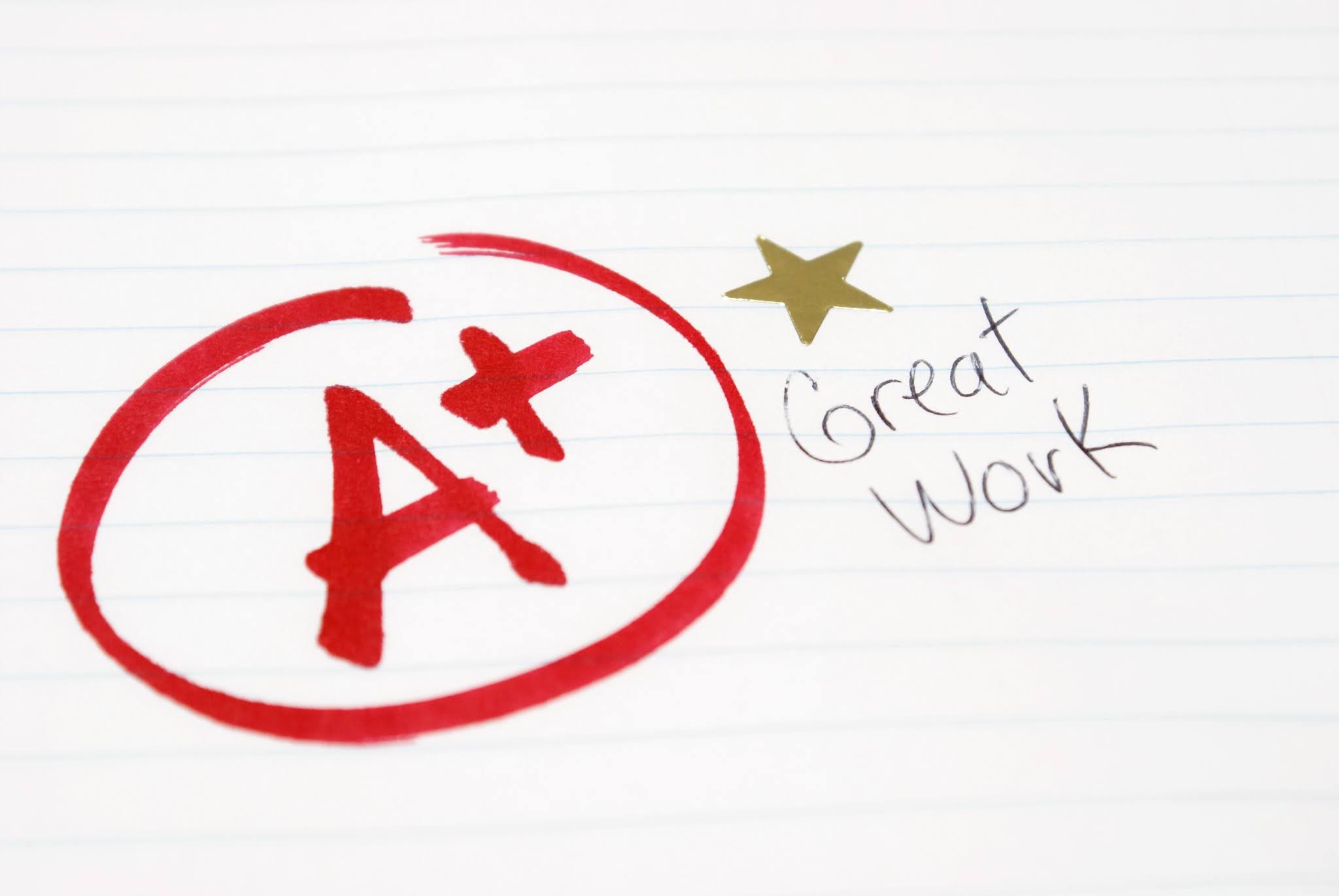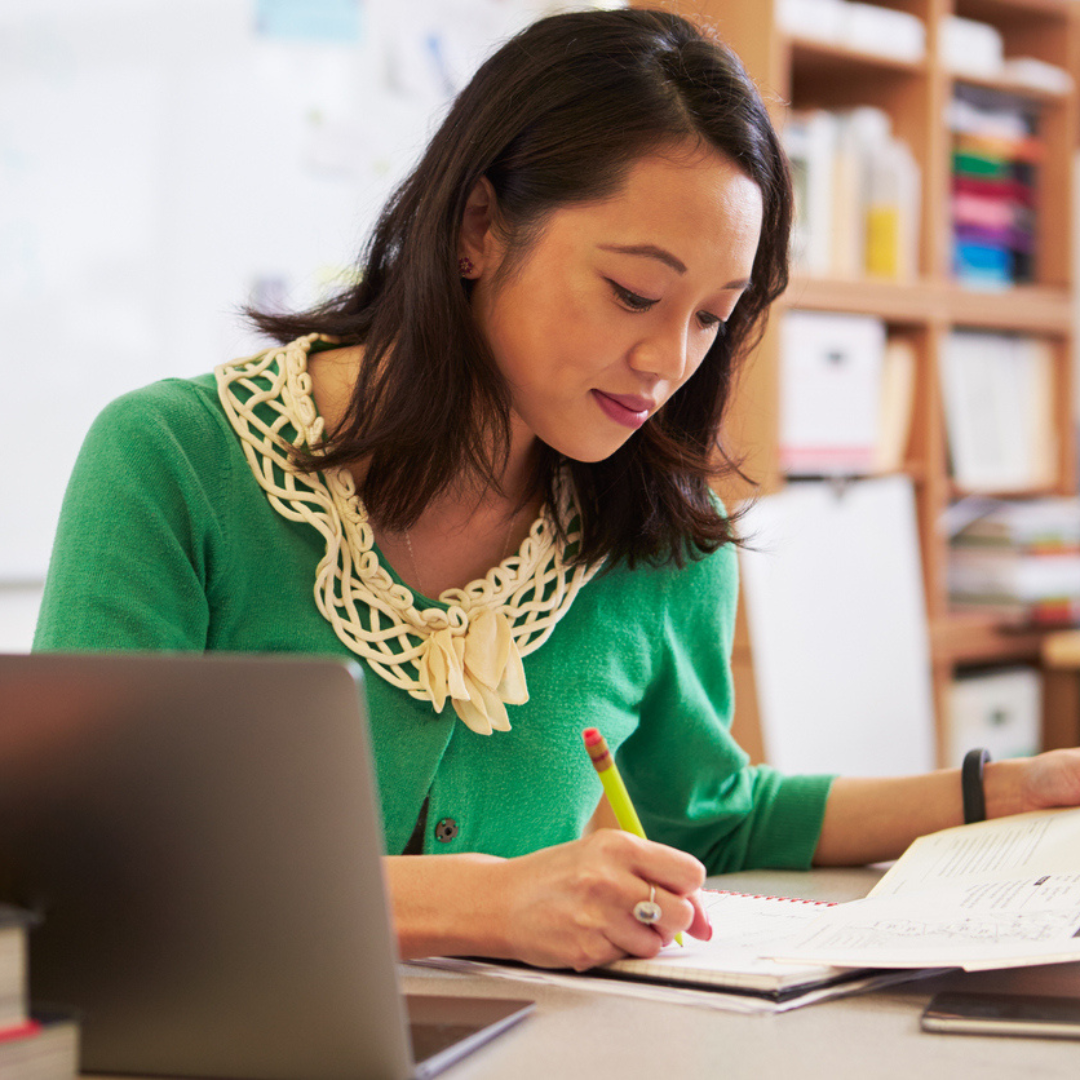By Megan Rees (aka Mrs. Funny Business)

I’d been teaching several years when I got a new colleague, who turned my world around on how to teach keyboarding. Her words of wisdom caused me to completely re-vamp the way I taught kids to type, and it’s made the students more successful, and me significantly less stressed.
Focus First on Keyboarding Technique
This was her shocking revelation: Do not grade their typing lessons AT ALL. I was floored. I mean, that’s what you do, right? You put them on the program you’ve purchased, teach them the proper fingers for the right keys, and away they go. And then your gradebook is filled with whether they have finished each lesson and so on. But this is what I learned: grading this way rewards the wrong behavior. Then it becomes all about finishing the lessons; even if they have to type it wrong. Even if they do it on weekends. Even if mom has to help them out a bit. But honestly—do I really CARE if they finished a lesson? What lesson am I actually teaching them? And the answer is clear—TECHNIQUE.
As I tell my students, if I were a basketball player, I could practice dribbling all day long and get really good at it, but if I’m dribbling with two hands instead of one, I’m not going to be a very effective player. I don’t care how many lessons they finish—I care how they type them. And so my entire gradebook shifted to technique, and for the first few weeks, that’s basically all that I grade. It’s worth 30% of their grade the first quarter of the semester.
Grading Student Technique
How do I grade it? On day 1 I let them type as they normally do, and take their starting technique score. This is not graded, but it tells me where they are starting at. Many of them are not even using home row, despite supposed years of learning keyboard in the labs in elementary school. I grade them on a scale of 1-4 for each of the six technique elements below. Then I spend the next few weeks explaining, demonstrating, and reminding them of these elements:

A couple of notes on some of these:
- I have students pull their keyboards to the edge of the table, which makes it harder for them to rest their wrists. I have heard of some teachers that Velcro their keyboards in place, but I want to also build the habit of immediately placing the keyboard when they begin to type
- I tell them that resting their wrists is like putting on the breaks. If you put on breaks slowly when driving a car and you are only going 10 mph, you won’t notice much. But you WILL notice when you are driving fast. So if they are resting wrists, they might not even realize this is what is making them slow. It is not possible to rest your wrists and type 100 wpm, just like it’s not possible to drive 100 mph with your brakes on!
- For eyes, I use the KeyMaster Learning Lights Keyboards, and they have been a game changer. But even if you do not have these keyboards yet, having some way to cover their hands is essential to breaking the habit of looking at their keys.
- Watching for correct fingers can be difficult, especially if you are using keyboard covers that cover up their hands. Again, the Learning Lights Keyboards make this a lot easier to watch for. You have to catch that students are using the wrong fingers early—otherwise they will spend your class time building bad habits that can become impossible to break.
Technique Checks
Once I have taught them the proper technique, I give technique checks 1-2 times a week, sometimes more. It does not take me very long at all. I have an entire spreadsheet system for it (Excel) that you can find here, or you can create a simple spreadsheet yourself with student names and each technique type. I put the names in order they are sitting, and I only check the box if they do not have each element correct. So I watch each student for maybe 30 seconds (less if their technique is already good) and check the boxes for anything they are not doing correctly. The sheet I created makes it very easy to enter this information into the spreadsheet and it calculates a score for me. It even alphabetizes the list so I can quickly enter the scores into my gradebook.
ABC Testing
It is essential that in those first few weeks, technique is the center of their learning. After they have learned all the keys, I then do an ABC test—also a suggestion from that wise colleague of mine. For this test, I stand behind them and watch them type the alphabet. I have them turn their lights off of their Learning Lights Keyboards for this. I watch to see if they type each key with the correct finger. If they make a typo, I tell them to type it again correctly—I am not checking for speed or accuracy here, just that they know which finger goes on which key. If they miss one, I tell them at the end which one it is and tell them to keep practicing, and then test them again a few days later. It usually takes less than a minute, though some students may have to try a couple of times. You could also call out the letter and have them type it as you say it.
Final Grading - Speed & Accuracy
At the end of the semester, my students have several tests. One of them is technique—I do a final technique score, this time grading on a 1-4 scale as I did at the beginning, and compare it to their first score that I took the first day. I also grade them on speed—they must have improved by 15 wpm AND type at least 35 wpm in order to get a 4.
I’ve been teaching for 18 years, and this method has come about through many trials and errors, and I have found it to be the most effective way to get fast typists in your class! I also have methods for teaching speed and accuracy—but that’s a whole other story! Thank you for listening!


